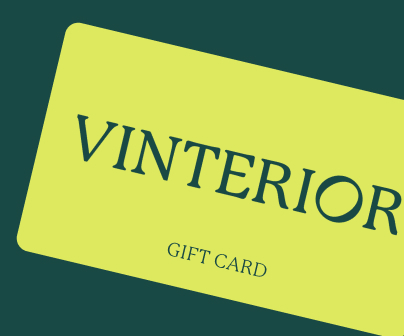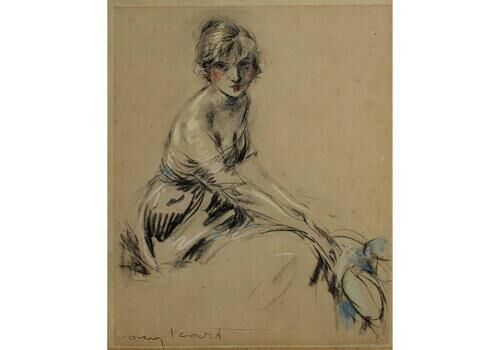Chest Or Stollentruhe, Early 16th Century, German Gothic, Oak Chest, Original
£25,565 per item
Shopping at Vinterior
-
14-day return guarantee
-
Outstanding customer service
-
Secure payment
-
Buyer protection
-
Trees planted for every purchase

Item details
Height
71.5 cm
Width
172.0 cm
Depth
63.0 cm
Wear conditions
Good
Wear conditions
Excellent
Shows little to no signs of wear and tear.
Good
May show slight traces of use in keeping with age. Most vintage and antique items fit into this condition.
Average
Likely to show signs of some light scratching and ageing but still remains in a fair condition.
Apparent Wear and Tear
Visible signs of previous use including scratches, chips or stains.
Please refer to condition report, images or make a seller enquiry for additional information.
Description
This standing chest is of clamp-front construction, extensively decorated with long, ironwork straps with quatrefoil finials which ‘wrap’ around it, and has an ornate, central lockplate, and front legs with full, height stiles. The ironwork straps and finials are fixed with convex, headed nails: running along the front, five long straps; the two side straps; and the five straps on the top. On the chest front, centrally placed, is a large, iron lockplate with four outer, radiating spade finals in each corner and three, superimposed spade finials (a symbol of nobility) which are pierced with the initials ‘BB’. The lockplate receives a corresponding, external hasp fitted to the lid. Below the floor of the chest, the two front stile legs retain most of their original height. The lid is supported by substantial iron strap hinges that extend right down the back of the chest. Inside the chest at the left end is a shallow, oak till.
Construction The chest is of joined, 'clamp-front' construction, reinforced by the nailed, iron mounts. In total it uses ten, oak boards which were riven and planed. The back and front are each formed from a large single plank held to the full height stiles by long, pegged tenons. The sides are also single boards joined into the stiles using long tenons held by dowels, and extend down below the chest bottom, concealing the ends of the bottom boards. The bottom consists of a single board cut into the sides and shallow rebates in the stiles. The front and back boards are dowelled into the bottom boards. The lid which overhangs the sides has a narrow cleat at each end, and consists of one wide plank which has bowed a little as a result of shrinkage.
Ironwork : The wrought ironwork straps, lockplate, hasp and lock all appear all appear to be early, and of the same original manufacture and are fixed with convex headed nails. There is mild dark staining of the oak around the iron mounts, possibly because of low tannin content in the oak.
Length 172 cm., 67 ¾ in., Height 71.5 cm., 28 ¼ in., Depth 63 cm., 24 ¾ in.,
Related to: No 900:2-1904 V&A Museum, London. Stadtmuseum Dusseldorf. Decorative Arts Museum Berlin. Museen Schleswig-Holstein & Hamburg. A related example featuring elaborately-carved feet and formerly in the Horsham Museum, West Sussex, sold at Christie's in 2010 for £97,250 and another example, again with carved feet sold at Sothebys in 2006 for £48,000.
Literature: A similar example is illustrated in H. Lüttgens, Alt- Aachener Wohnkultur; Ein Rundgang durch ein altes Aachener Haus im Wohnstil des 18. Jahrhunderts, Aachen, n.d., ill. 12, and another comparable iron-bound chests illustrated in H. Kreisel, Die Kunst des Deutschen Möbels, Munich, 1974, pls. 45-46.
This type of large oak standing chest is known as a 'stollentruhe' (studded chest) and is thought to have been made from at least the early-16th century, based on the style of ironwork and form of the front legs which tend to be carved on earlier models. The German Renaissance was established and Albrecht Dürer and Lucas Cranach the elder were famous throughout Europe. The type has become closely associated with the Westphalia region in central, western Germany (between the Rhine and Weser rivers, located north and south of the Ruhr River).
The great weight of this chest, the plain back, and decorative carving and ironwork indicative that it was essentially a static piece of furniture, combining large storage capacity and a reasonable measure of security with conspicuous display. In addition to its impressive proportions and height off the ground (keeping the contents away from damp or dirty floors), its most showy aspect is the wrought and cut ironwork mounts. The multiple, iron straps fulfil a Dual role: decorative but also reinforcing the structural wood joints. Evidently such chests were intended to be secure: the timbers and hinges (a notorious weakpoint of chests) are notably robust. The central lock-plates on these chests are particularly impressive but in terms of security represent the weak point of the chest. Geoff Egan has described medieval locks as ‘among the most complex everyday objects to have survived, although most have simple, easily-picked mechanisms, inside cases designed to look as robust and secure as possible’ (Egan, Late Gothic 1998). In the same way as keys were displayed as a badge of status by officers of the household and women in Renaissance Europe, ornate locks on doors and chests were part of a concern to draw attention to household wealth and its distribution on controlled terms. Whatever the contents of such chests, they were a way to assert the authority of the owner. The pierced initials ‘BB’ indicate that this was made for a particular person and the use of the spade motif on the central part of the lockplate suggests that he or she was of noble status.
Function : Chests (of all shapes and sizes) were the most common form of furniture in late-medieval/Renaissance households. Even poor households are likely to have had at least one, while the inventories of great households can list hundreds. They were used to hold all manner of goods: coin, plate and personal jewels, clothes and textiles, vestments and chapel ornaments, muniments, books, arms and armour, lights, grain and bread. A practical disadvantage of large chests was accessing contents especially smaller objects at the bottom. Most chests of any quality have a built-in, lidded compartment or 'till' across one or both ends. These must have been convenient for smaller valuables (and perhaps candles), and some were fitted with their own lock. Chests were conventionally placed next to beds. They often contained valuable linen for the bed, but would also be close under the watchful eye of the owner.
Condition report:
Good. Wear consistent with age and use.
Cancellations
We offer free cancellations and full refund for orders cancelled before dispatching. View full policy.
Returns
We have a 14-day return guarantee for orders from individual sellers, within the UK and European Union. View full policy.
Free collection available
Yes
Similar Chests of Drawers
Similar Chests of Drawers
You may also like
You may also like
Choose a Wishlist
Create Wishlist
- Ships from BUNGAY, United Kingdom
Cancellations and Returns
Last updated: 24th March 2025
We want everybody’s Vinterior experience to be seamless, so both buyers and sellers can fall in love with pre-loved. We designed our Terms of sale to treat everybody fairly.
However, sometimes things don’t go exactly to plan, and you may need to cancel or return an order.
To prevent this, we encourage you to check listings, photos and descriptions carefully before you buy. If you aren’t sure about a piece’s condition, size, provenance or shipping, just ask; click Contact seller to get in touch. Always contact your seller first if you have any queries, at any point in your purchase.
Our buyers receive the same protection when buying from all our sellers, both professional and verified.
Can I cancel an order?
There are many reasons why you might need to cancel an order, and you'll often be entitled to a refund. To cancel an order, click Create cancellation on the order page.
If you cancel your order before it has been dispatched, you will receive a full refund - including delivery costs. However, if your item has been shipped, delivery costs will not be included in your refund.
Please note: orders of bespoke, personalised or made-to-order pieces cannot be cancelled.
Can I return an order?
We understand that sometimes a piece isn’t the perfect fit. So if you no longer want your order, our returns process will ensure it finds a new home fast.
The Vinterior Guarantee included with your purchase entitles you to 14-day returns - allowing you to return any item within 14 days of the delivery date (except in specific circumstances, detailed below).
You can return your order if...
It isn't what you expected
If what arrives isn’t what you ordered, you can open a return. Just send us some photo evidence that the listing was inaccurate, misleading or misrepresented your purchased piece, and you’ll receive a refund.
You change your mind
If you don’t feel a piece is right for your space, you can return it. Once you request a change of mind return, you’ll be responsible for shipping the piece back to your seller as soon as possible. Delivery costs are non-refundable.
It's damaged in transit
In the rare event that an item arrives damaged or defective, you have a full 30 days from the date of delivery to return it for a full refund.
If your purchase arrives broken, always let us know. If Proovia delivered the piece, we can raise an insurance claim on the seller’s behalf. Or, the seller can raise a claim with their chosen courier.
What can't I return?
Just as there are some orders you can’t cancel, there are some you cant return, too. Personalised, bespoke or made-to-order pieces are non-returnable, and non-refundable. Sellers may also reject your return if the item has been altered in any way.
Please note: pieces on our site are pre-loved, not new. They may show some wear and tear; this is not sufficient grounds for a refund, unless the seller has misrepresented the item’s condition.
Lastly, neither Vinterior nor our sellers are liable for any damages or loss sustained in transit via third parties.
I'm eligible for a return. Now what?
To initiate a return, log into your Vinterior account, then go to the relevant order page and click Create a return. In the return request, be sure to include all the details: the reason for your return, an in-depth description, and photos of any issues or damage.
How will I receive my refund?
Once the seller confirms they’ve received the item (in the same condition it was sent), we will send your refund to your original payment method.
All items are inspected on return. If the seller receives the return with damage they don’t recognise, we will not be able to process your refund and the seller may need to send the piece back to you. You will be required to cover these delivery costs.








